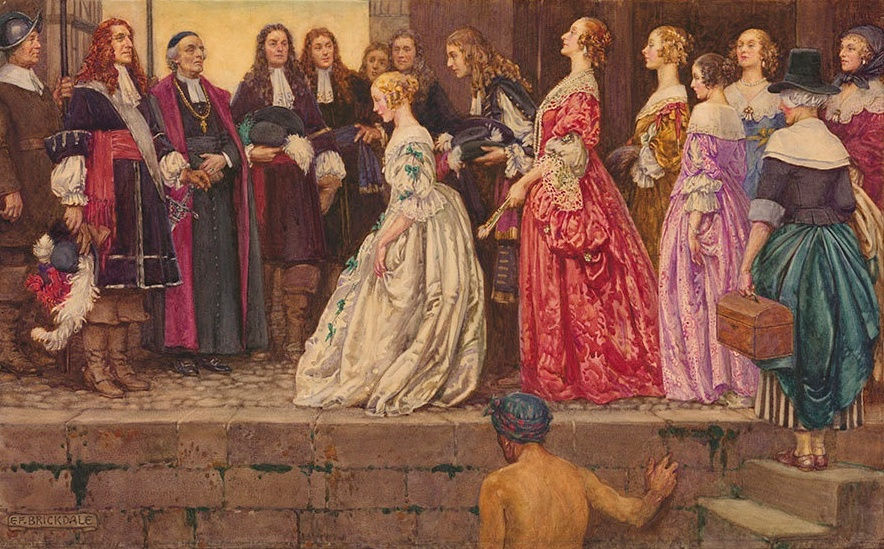He wanted to establish a strong and profitable colony in North America. But male workers who finished their contracts and soldiers who left the army did not stay on in New France. It was no way to build a colony.
An incentive was needed to keep them in Canada. The king’s advisor Jean-Baptiste Colbert had a solution.
Women. And in short order, children.
Thus was hatched the plan to send prospective brides, sponsored and protected by the king, to New France.Colbert spread the word for rural women who knew hard work.
“They must be healthy, strong, and in no way disgraced by nature” he wrote, “and in no way repulsive on the outside!”
For a decade beginning in 1663, nearly 800 Filles du Roi (Daughters of the King), aged 16 to 40, were sent to New France and instructed to marry—quickly.
Orphans, widows, unmarriageable daughters and women seeking adventure were recruited, some no doubt attracted by the 100 pounds allowance (livre tournois), trousseau and passage to North America.
Poverty drove many to sign on. Others wanted better opportunities than offered to women of their station at home. One, Madeleine de Roybon d’Alonne, a daughter of nobility, possessed of an intrepid spirit, apparently came for the adventure, and stayed. She was still single when she died at age 72.
The first contingent of 36 women arrived on Sept. 22, 1663, each bringing a chest filled with clothing, sewing supplies and some hope.Sometimes a bride or groom went through several annulments. Of the 95 marriages that were annulled, 80 women remarried and seven were married three times.
They immediately set about determining which bachelors had farms and businesses. “And they are wise to do so,” wrote the founder of the convent where many Filles du Roi initially laid their heads, for men with property were better bets for finding happily-ever-after.
Filles du Roi were provided room and board until they married. Given the number of bachelors, nuptials came quickly for most—but not all were permanent.
There was no backing out once a couple was married in church, but many opted for a civil ceremony, backed by formal agreements made before a notary. These could be annulled.
Sometimes a bride or groom went through several annulments. Of the 95 marriages that were annulled, 80 women remarried and seven were married three times.
After a marriage contract was signed, dowries were granted depending on the lady’s social station. Upper class women received 100 pounds or even more, while most commoners were granted 50 pounds (about two-thirds of a labourer’s annual wage).
Only about 30 of the women returned to France, disillusioned by hard work, nasty weather, isolation and, no doubt, less than stellar husbands.
Most settled into their new lives and began producing Canada’s first baby boom, aided by a policy that granted an annual pension of 300 pounds to families with more than 10 children. Catherine Moité, among the first to arrive, had 11 children, 65 grandchildren and 344 great-grandchildren. Her family tree is featured at the Canadian Museum of History in Gatineau, Que.
Two-thirds of French Canadians can trace their roots back to the Filles du Roi, whose descendant’s number in the millions today.
Advertisement
























